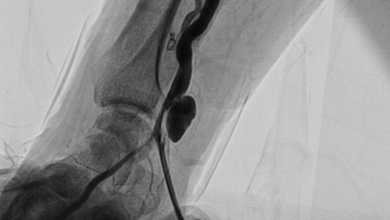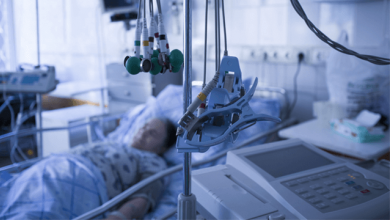Search results
Author(s):
Sascha Ott
,
Laura Leser
,
Pia Lanmüller
,
et al
Added:
2 years ago
Author(s):
Jacob Green
,
Vasilis Babaliaros
,
Peter Block
Added:
3 years ago
Mitral regurgitation (MR) is the most prevalent form of valvular heart disease. Its major causes are primary mitral leaflet abnormalities (valve prolapse, healed endocarditis, or rheumatic disease), primary myocardial disease (functional MR), and ischemic disease. Even with severe MR, affected individuals may remain asymptomatic for long periods of time.1 The early, compensated state of MR is…
View more
Author(s):
Michael Megaly
,
Marwan Saad
,
Emmanouil S Brilakis
Added:
3 years ago
Percutaneous coronary intervention (PCI) of small-vessel coronary artery disease (SVD) is challenging because of difficulties with equipment delivery and high restenosis rates. Drug-coated balloons (DCBs) are an attractive emerging PCI option for patients with SVD.
Small-vessel coronary artery disease
SVD was defined in the Intracoronary Stenting or Angioplasty for Restenosis Reduction in Small…
View more
Author(s):
Deepak Padmanabhan
,
Ameesh Isath
,
Bernard J Gersh
Added:
3 years ago
Endovascular techniques for renal denervation (RDN) as a treatment for hypertension were initially highly encouraging with reductions in blood pressure (BP) in the range of 30 mmHg.1 However, these high expectations received a major setback following the unexpected results of the sham-controlled Renal Denervation in Patients With Uncontrolled Hypertension (SYMPLICITY HTN-3) trial. This promising…
View more
Author(s):
Tanawan Riangwiwat
,
James C Blankenship
Added:
3 years ago
Author(s):
Elliott M Antman
Added:
3 years ago
In July 2004, the American College of Cardiology (ACC) and the American Heart Association (AHA) Joint Task Force on Practice Guidelines released new practice guidelines for ST-elevation myocardial infarction (STEMI), which emphasize the need for speed when chest pain or other symptoms of a heart attack strike. Speedy treatment not only means the difference between life and death but also between…
View more
Author(s):
Andrea Elliott
,
Garima Dahyia
,
Rajat Kalra
,
et al
Added:
2 years ago
Author(s):
Christopher J White
Added:
3 years ago
More than three-quarters of a million Americans will suffer a stroke this year. Stroke ranks as the third most common cause of death after heart disease and cancer. It is the number one cause of disability among adults and the main reason for rehabilitation. Many, but not all, strokes are related to atherosclerosisÔÇöthe same disease that causes heart attacks. Blockage of one of the two main…
View more
Author(s):
Jack Collier
,
Arthur J Labovitz
Added:
3 years ago
The approach to the treatment of a variety of cardiovascular disorders has undergone remarkable change over the past two decades. The use of both percutaneous interventions in patients with acute myocardial infarction and automatic implantable cardiodefibrillators in patients with ventricular arrhythmias represent important examples. The cardiology community is currently in the process of another…
View more
Author(s):
Usha B Tedrow
Added:
3 years ago
Since the 1980s, dramatic advances in electrophysiology procedures have occurred. Catheter positioning is most often assisted by fluoroscopy. Sophisticated electroanatomical mapping systems can also display catheter position and create a 3D depiction of the anatomy. Magnetic resonance imaging (MRI) and computed tomography (CT) data can also be integrated, facilitating complex ablation procedures…
View more












 « First
« First